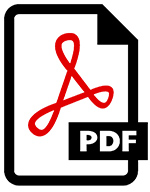By: Imogen Robinson
Send to a friend
The details you provide on this page will not be used to send unsolicited email, and will not be sold to a 3rd party. See privacy policy.
Data visualisation – the visual representation of data in charts and graphs – has grown in popularity in recent years. Media outlets and research communication organisations alike have invested in the production of data visualisation, committing to the belief that visualisation is an effective form of communication.

While a number of claims have been made around the potential of data visualisation as a communication tool, there has been a relative lack of informed discussion around the role that data visualisation can play in the research communication sector.
This report builds on our experiences of producing data visualisations and in data journalism more broadly, and brings together the lessons we have learned with insights from the broader sector of research communication. What follows will help researchers, research communication managers and journalists to make more informed decisions about when to invest in data visualisations in order to meet research communication goals.














